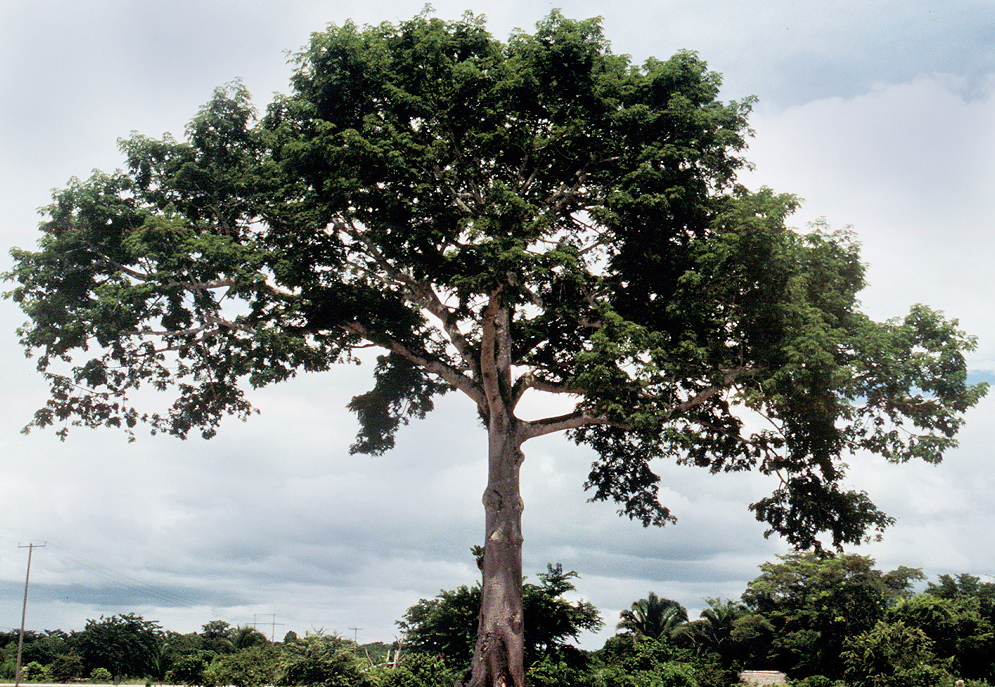Ceiba pentandra
Kapok tree ( Ceiba pentandra )
The kapok tree ( Ceiba pentandra ), also known as silk-cotton tree, is a species of the genus Ceiba in the subfamily of the silk-cotton tree crops ( Bombacoideae ).
Features
The kapok tree is a mighty tree, the plant height reaches up to 75 meters. He is one of the largest trees of the tropical rainforest. The stem is green and is supported at the age of buttress roots. In his youth, he is tightly covered with pointed, pyramidal to conical spines. The leaves are palmate fingered. You will be dropped at the beginning of the dry season in February to March. At this time drive from the tufts standing on branch ends pink or white flower buds.
The fruits are long and 15 centimeters at the handle end opening capsules. The approximately 100 round, black seeds lie in a bed of numerous hairs. The hairs arise from the endocarp of the fruit wall. Cancel at the fruit ripening of the fruit wall.
This species is pollinated by the wind ( anemophily ), but also by insects and bats.
Occurrence
The kapok tree is native to the tropical rainforests of South America and West Africa. He is now to be found throughout the tropics. Ceiba pentandra is a light in need of tree that requires a rainfall of about 1000-1500 mm during the rainy season.
Use
The kapok tree is cultivated for only a short time. From him kapok is obtained. The kapok fibers have a length of 10 to 35 mm and are composed of 64% cellulose and hemicellulose. Because of its wax coating they are water resistant and can not be spun. A single tree yields about 20 kg of purified fibers per year. These can be used as filling material for rescue rings and life vests or as padding and insulation without further treatment.
The seeds of the kapok tree (up to 25 % ) due to their high content of fatty oil regionally for the production of soap and cooking oil. Due to its antibacterial effect Kapok is also used in wound care to use.
Mythology
In the mythology of the Maya of Yucatán provides a kapok tree, the Axis Mundi, or World Tree is similar to the World Ash Yggdrasil in Norse mythology.
In stories that are widespread in the Amazonian lowlands of Peru, plays the kapok tree, which is known there Lupuna an important role. He stands in the Amazonian mythology, in conjunction with wights who live in huge, often belly -shaped trunk of the tree according to various traditions, or to dance around this.
Documents
- Susanne Bickel Sandkötter: crops and their ingredients. UTB 8176, Quelle & Meyer, Wiebelsheim 2001, ISBN 3-494-02252-6 ( Quelle & Meyer ) / 3-8252-8176-0 ( UTB ).




.jpg)



